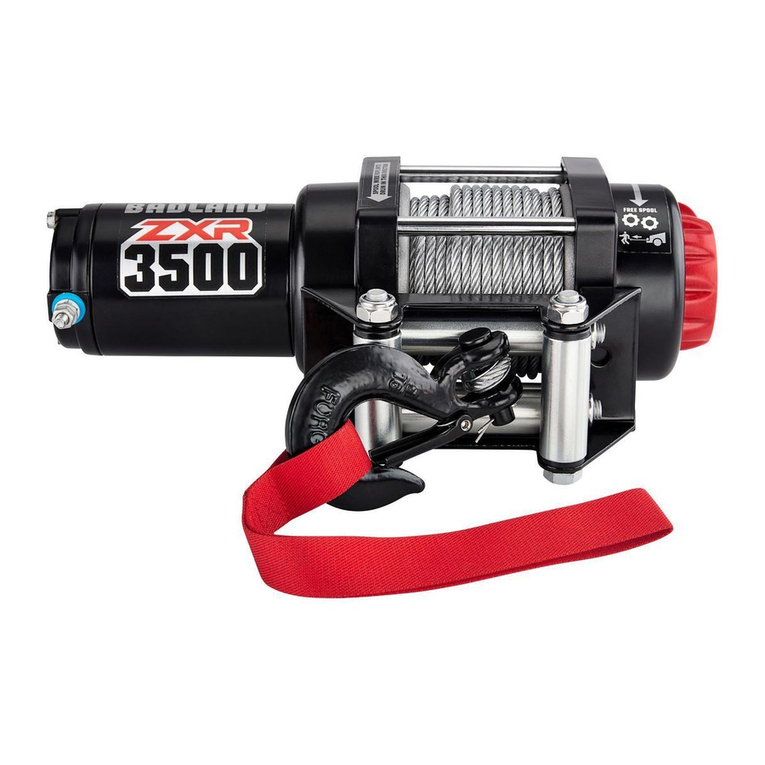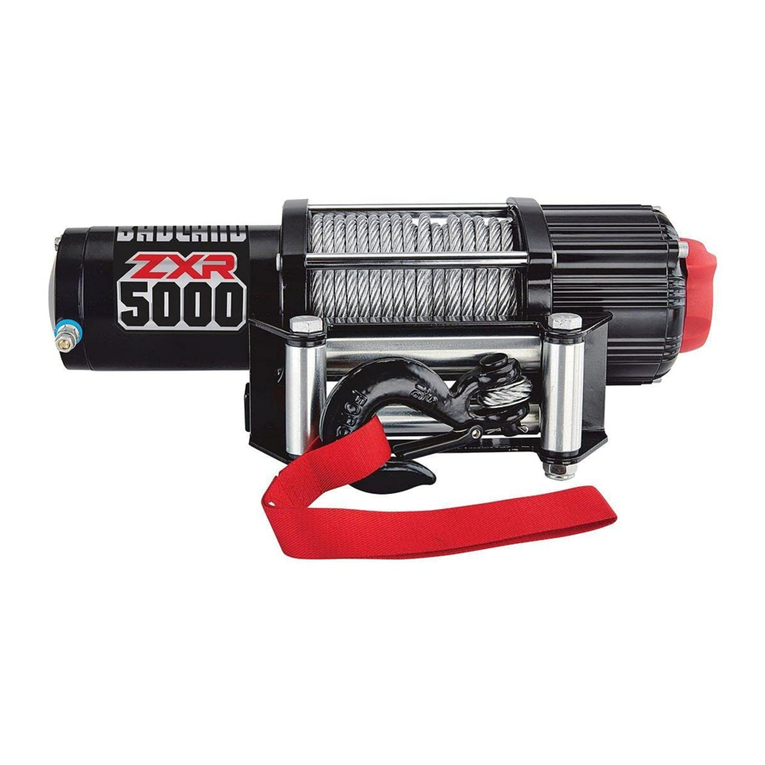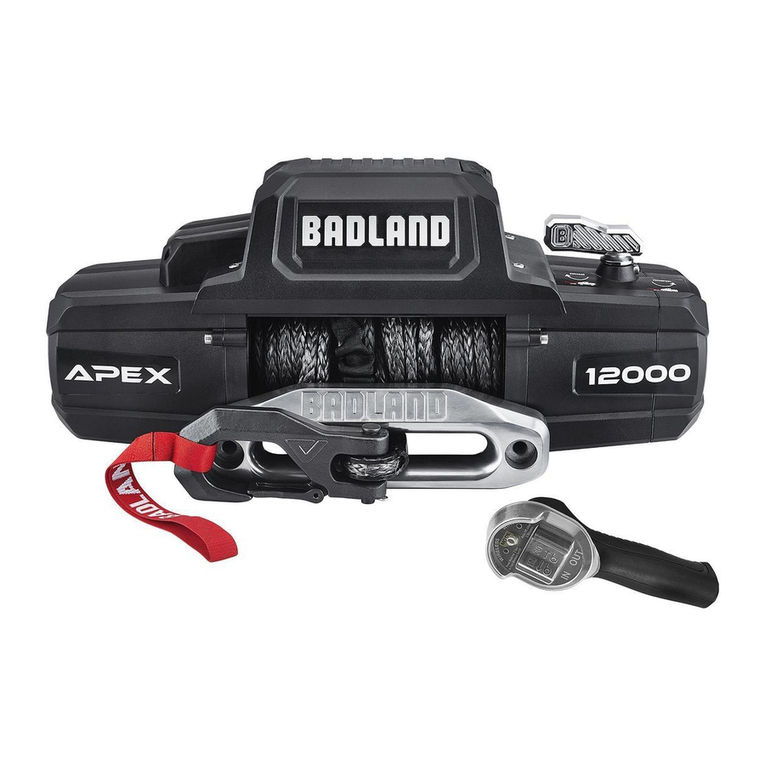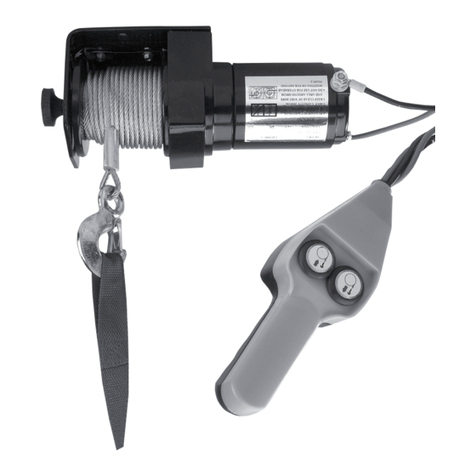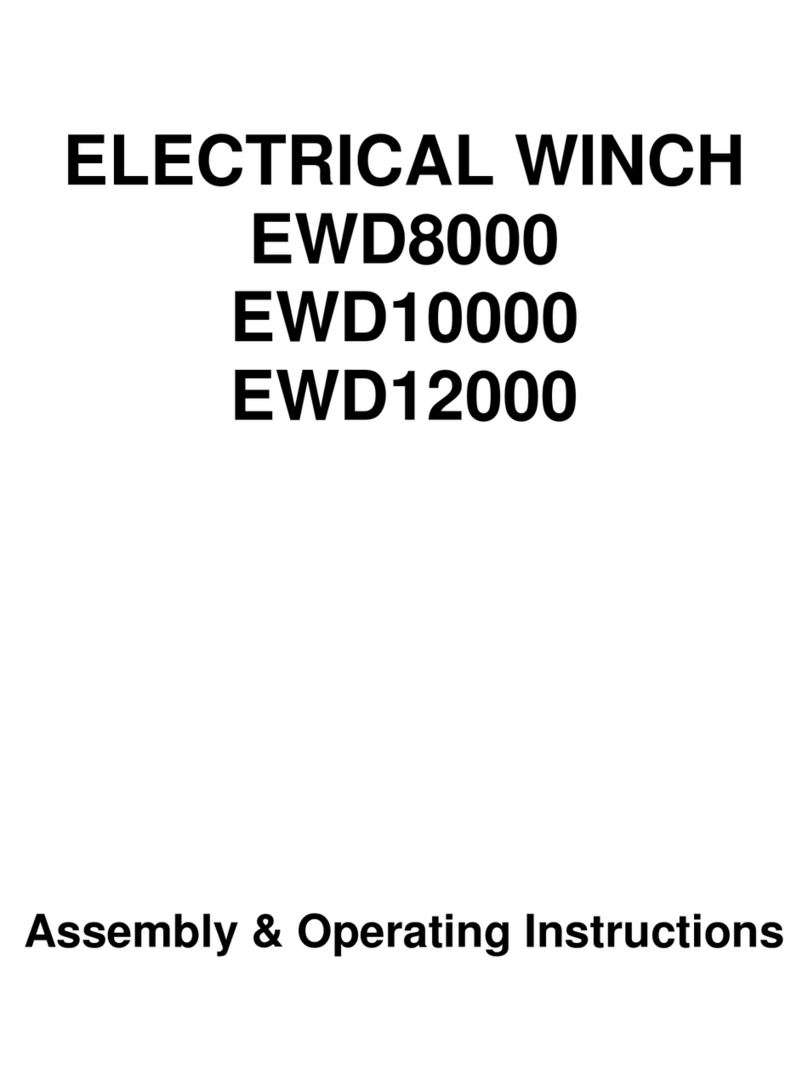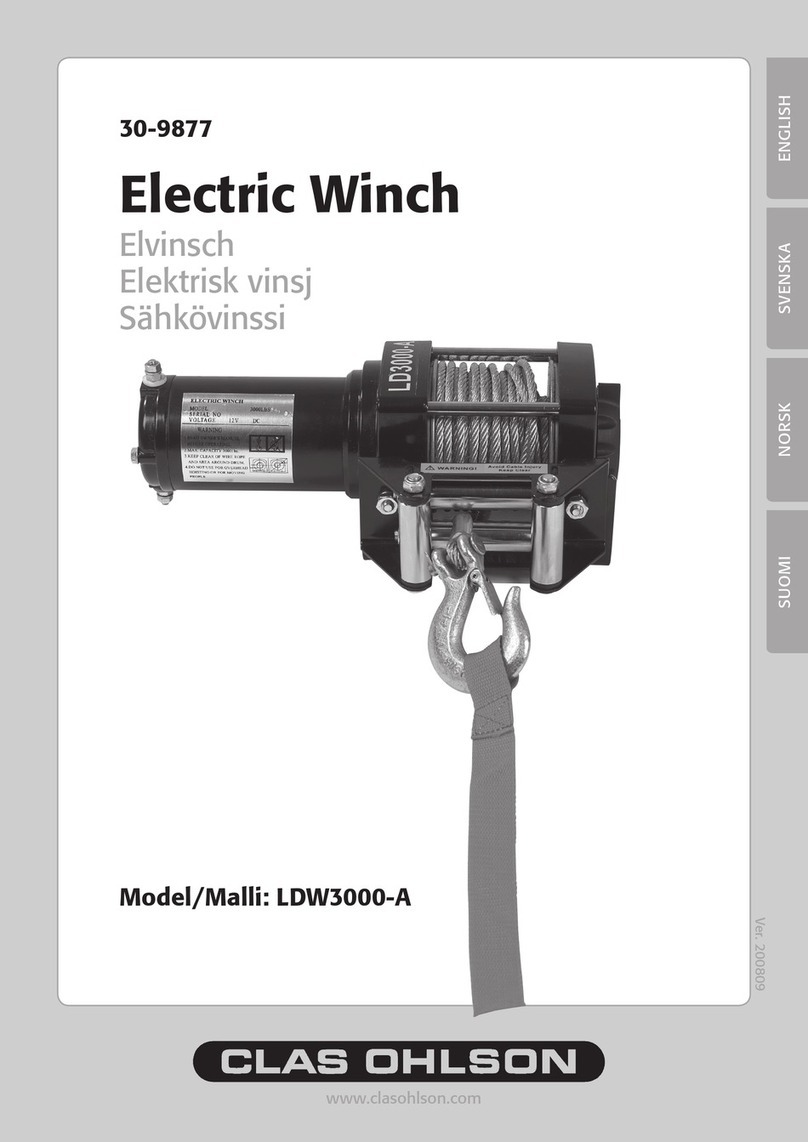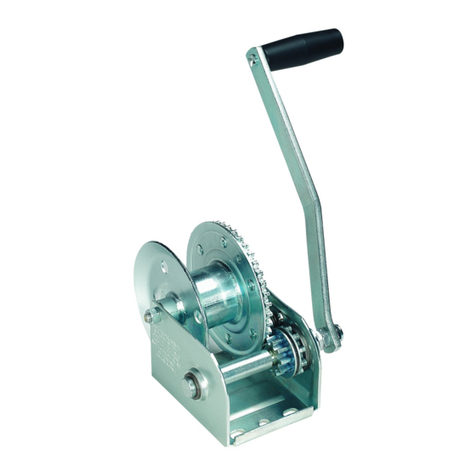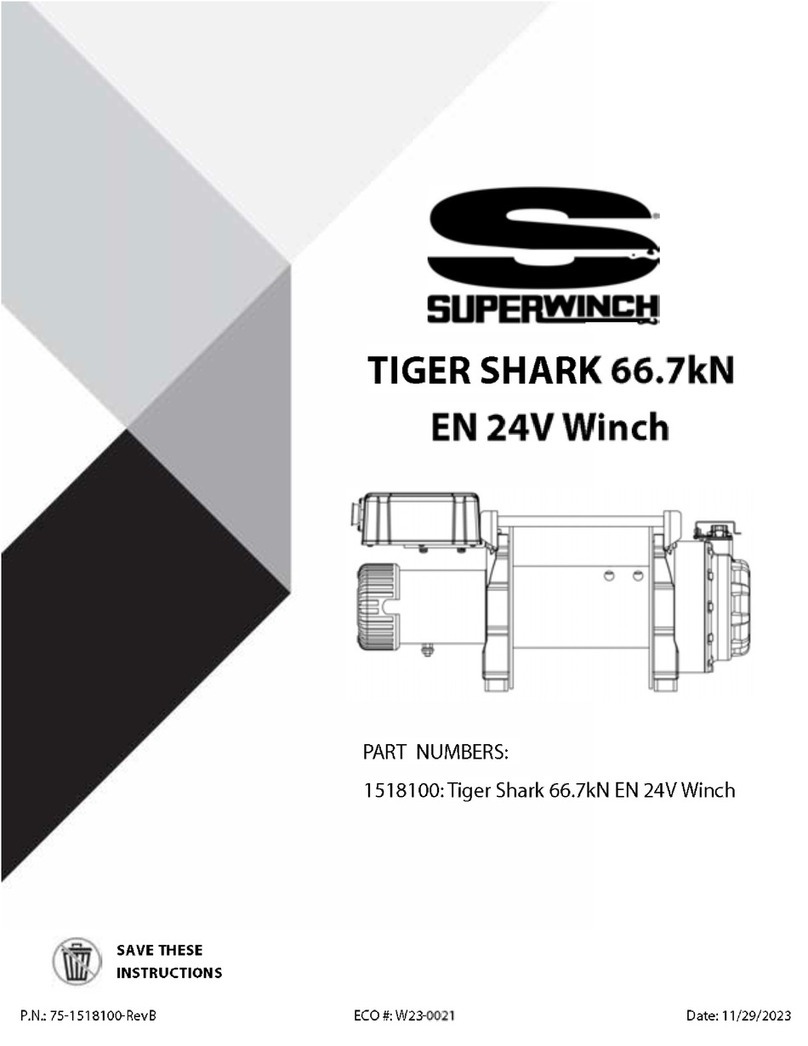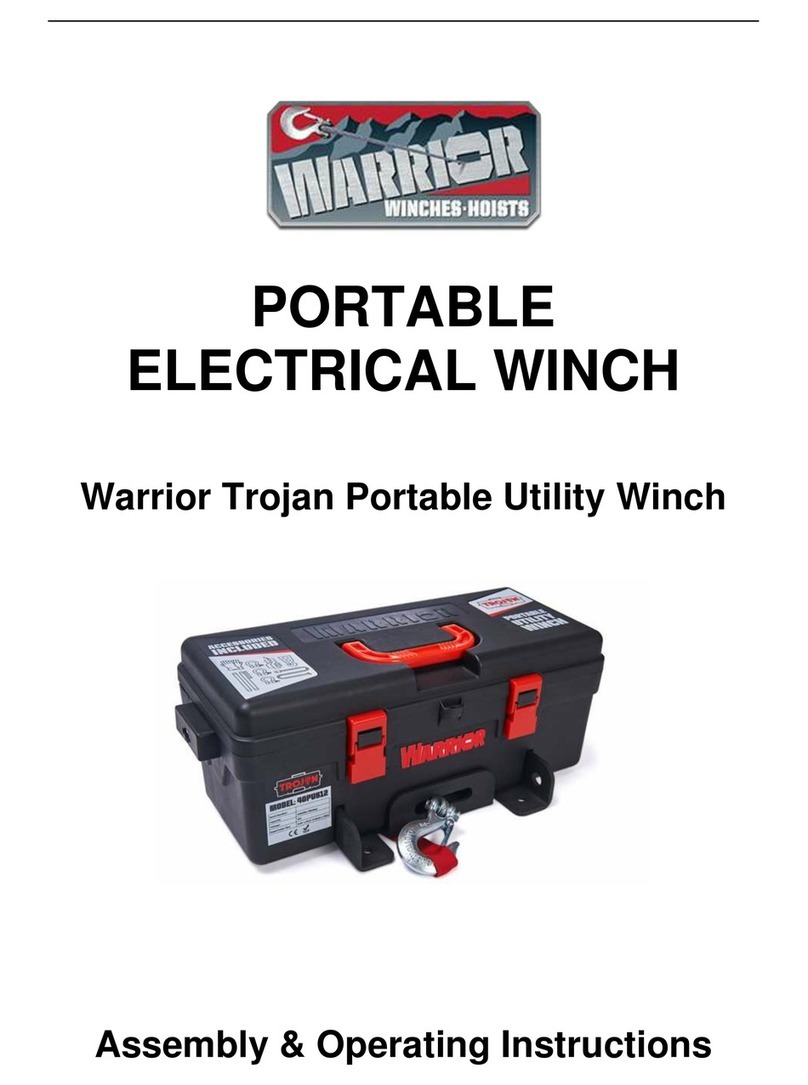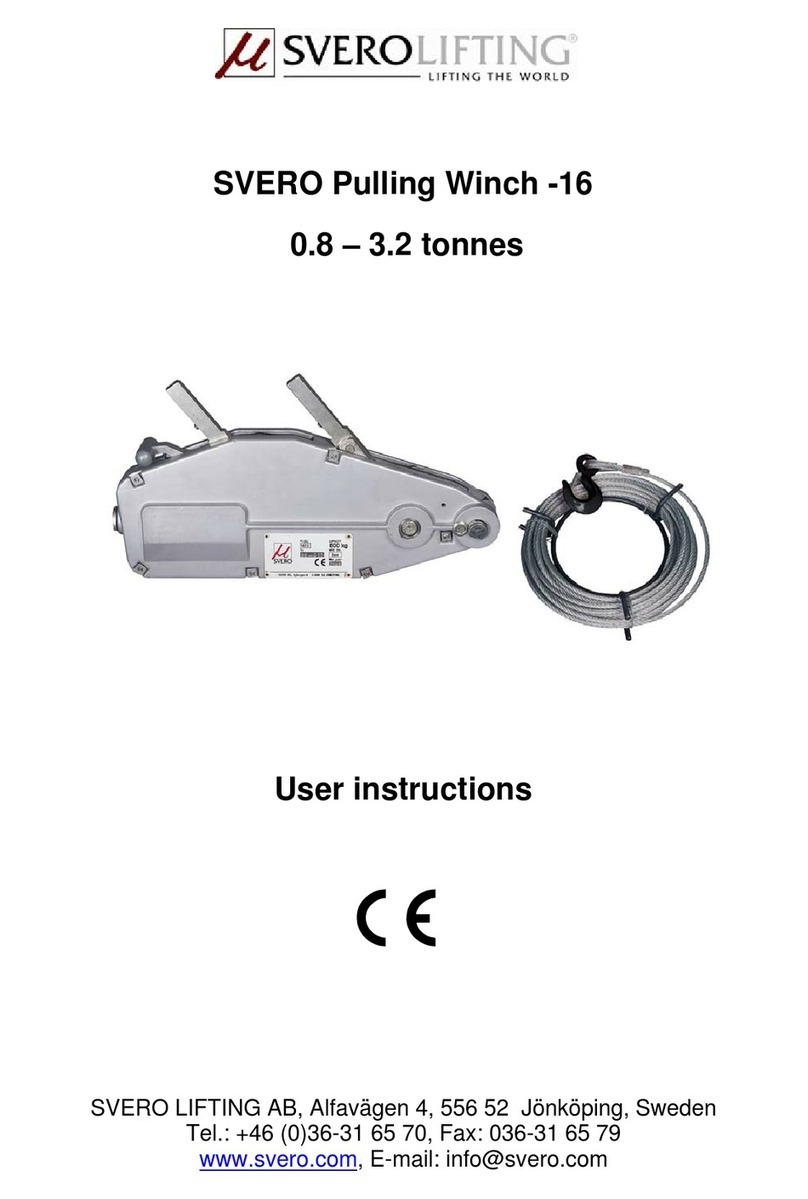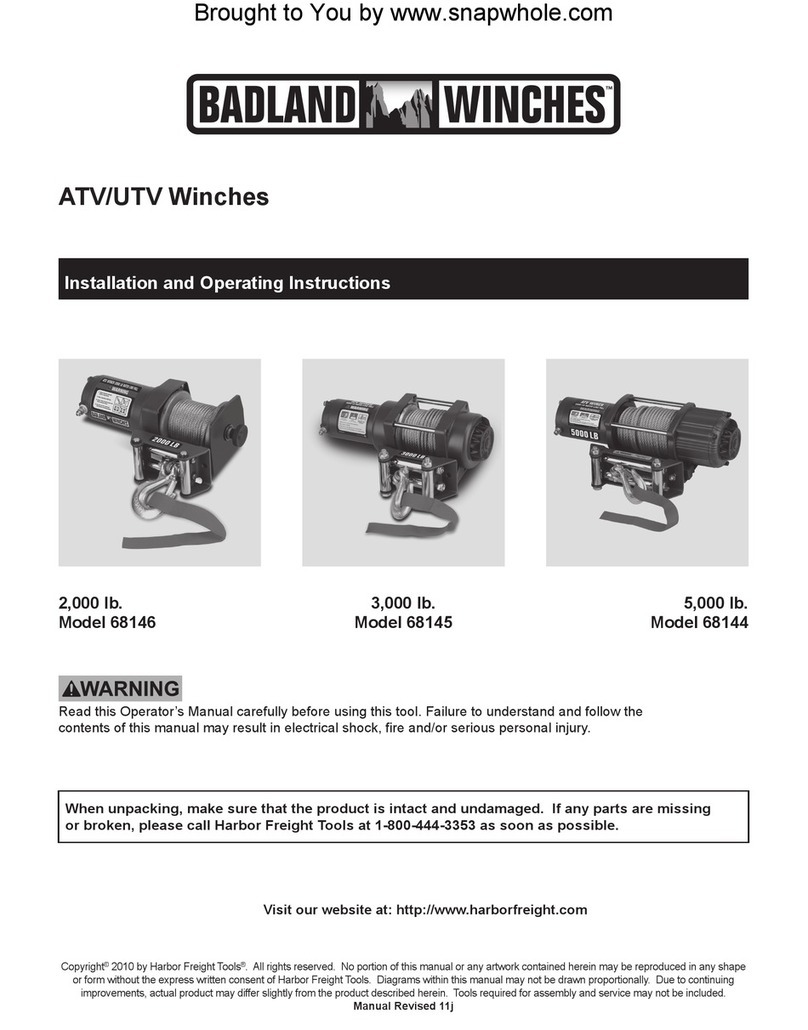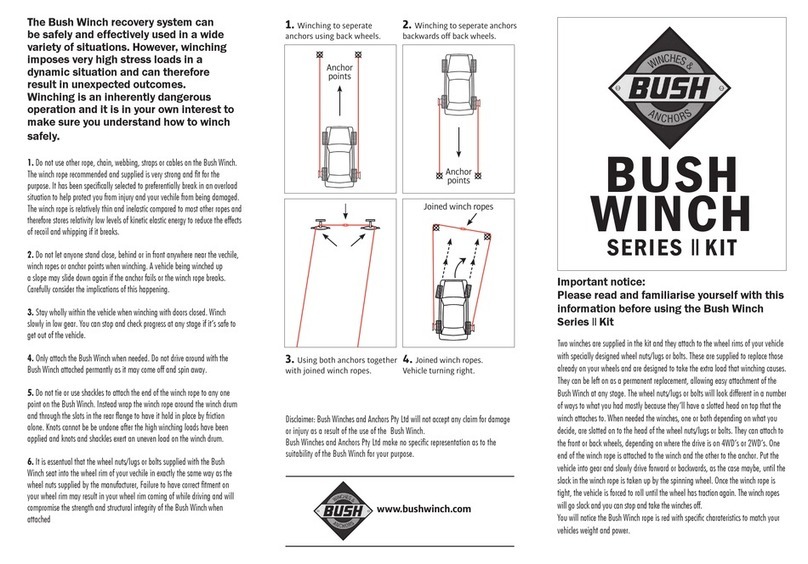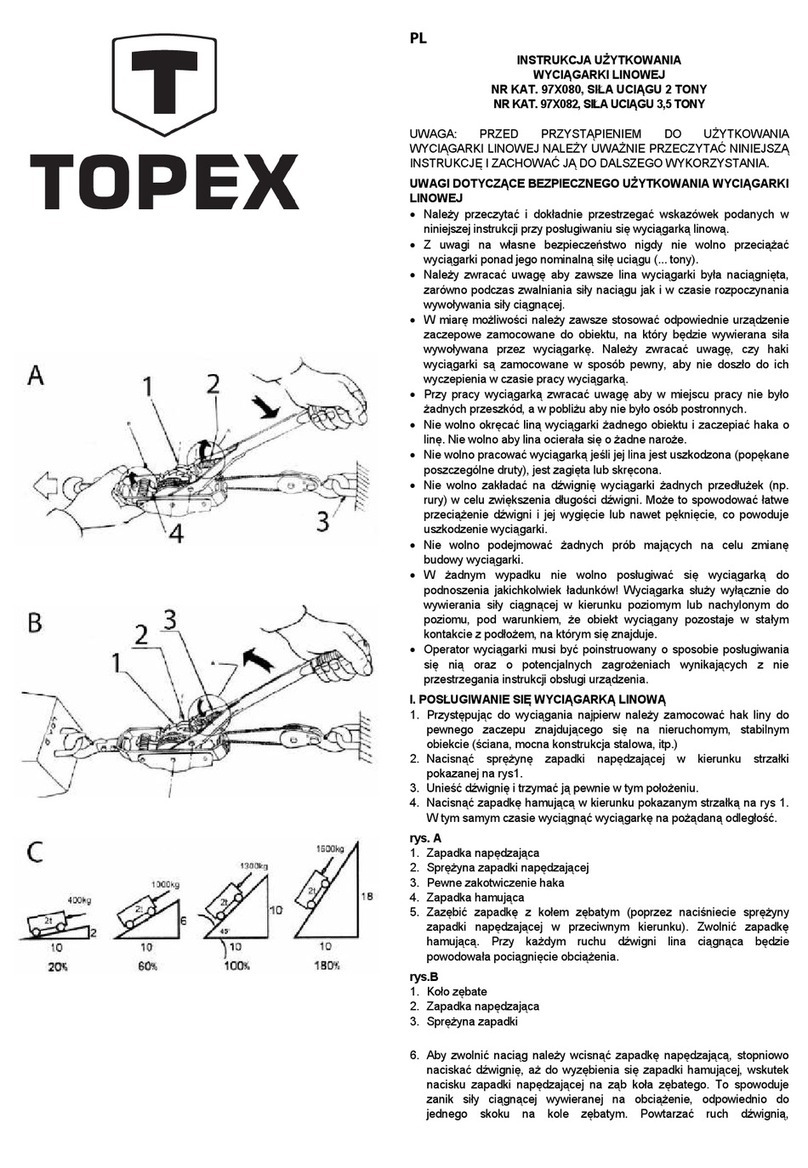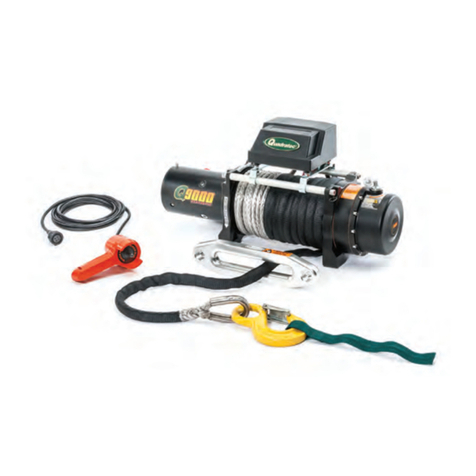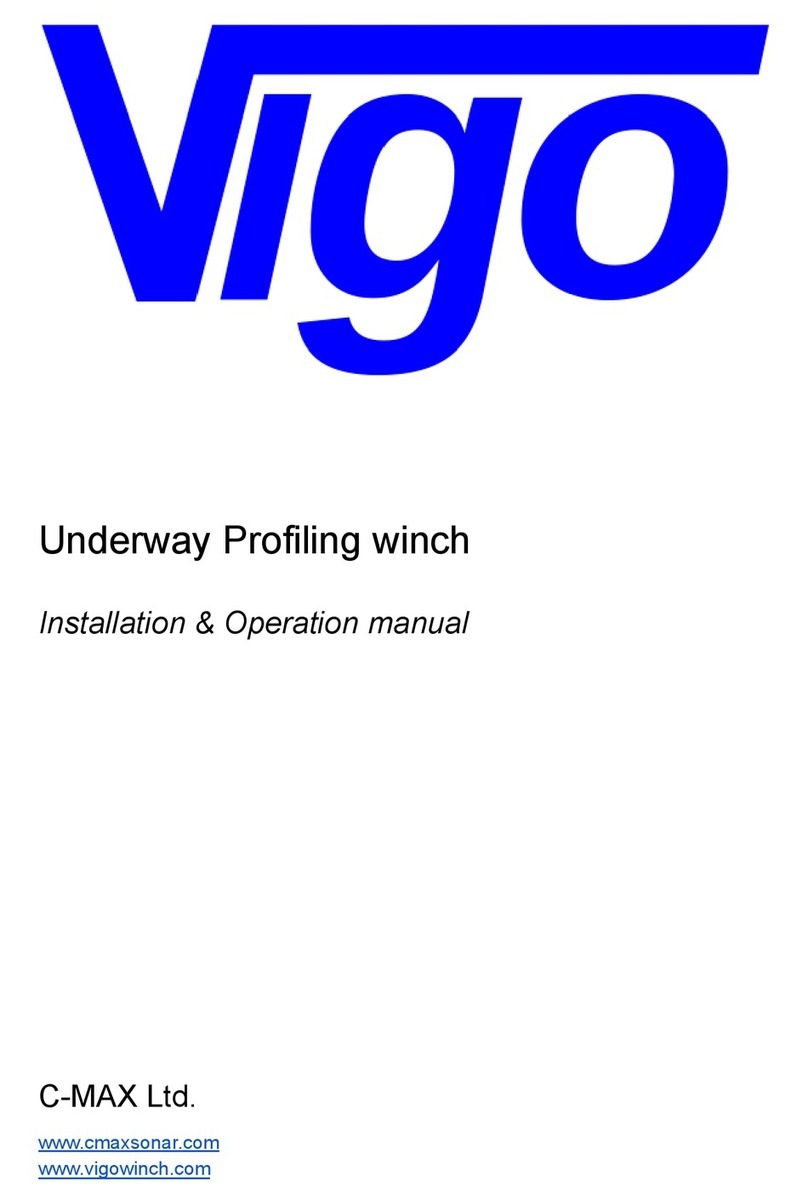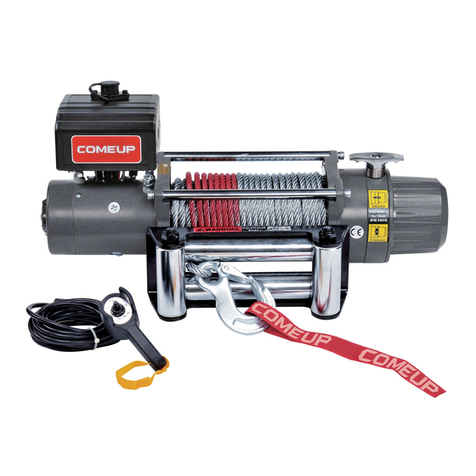
Page 5For technical questions, please call 1-888-866-5797.Item 57535
SAFETYOPERATIONMAINTENANCE SETUP
Operation Precautions
1. Do not exceed load capacity. Be aware of
dynamic loading! Sudden load movement may
briefly create excess load causing product failure.
2. Do not maintain power to the winch if the motor
stalls. Verify load is within rated capacity for
the synthetic rope layer — see Specifications on
page 2. Make sure the battery is fully charged.
Use double line rigging whenever possible.
Refer to Double Line Rigging on page 11.
3. Wear ANSI-approved safety goggles and
heavy-duty leather work gloves during operation.
4. Do not disengage clutch under load.
Engage clutch before starting.
5. Keep clear of fairlead when operating.
Do not try to guide synthetic rope.
6. Do not place finger(s) through hook or shackle.
Fingers may be caught and get pulled into fairlead
or drum. Use included strap to hold hook instead.
7. Stay out of the direct line that the synthetic rope
is pulling. If it slips or breaks, it will “whiplash”
along this line. Place a heavy blanket or winch
damper over the synthetic rope span 6 feet
from hook to help absorb the force released if
the synthetic rope breaks. Refer to Figure A.
Figure A: Whiplash Dampening
Blanket or Winch Damper
8. Do not use for lifting or moving people.
9. Use a spotter to assist you in ensuring that it
is safe to operate the winch. Make sure the
spotter is out of the way of the vehicle and the
synthetic rope before activating the winch.
10. Do not use the hand crank, if equipped,
to “assist” the winch.
11. Do not use vehicle to pull on the
synthetic rope and “assist” the winch.
12. Use as intended only.
Do not lift items vertically or use
for aircraft purposes.
13. Prevent entanglement. Do not wear loose clothing
or jewelry, as they can be caught in moving parts.
Non-skid footwear is recommended. Wear restrictive
hair covering to contain long hair.
14. Disconnect battery cables before working
near the synthetic rope, drum, fairlead or
load, to prevent accidental starting.
15. Inspect before every use; do not use if damaged
or parts loose. Examine the winch for structural
cracks, bends, damage, frayed or damaged
synthetic rope, and any other conditions that may
affect the safe operation of the winch. Do not
use the winch even if minor damage appears.
16. Keep children and bystanders away while operating.
Distractions can cause you to lose control.
17. Stay alert, watch what you are doing and
use common sense when operating. Do not
use a winch while you are tired or under the
influence of drugs, alcohol or medication. A
moment of inattention while operating winches
may result in serious personal injury.
18. Do not overreach. Keep proper footing and
balance at all times. This enables better control
of the winch in unexpected situations.
19. Hook onto the object using a pulling point,
tow strap or chain. Do not wrap the synthetic
rope around the object and hook onto the rope
itself. This can cause damage to the object
being pulled, and fray the synthetic rope.
20. Do not use a Recovery Strap while
winching. They are designed to stretch
and can suddenly whip back towards the
operator during a winching operation.
21. Secure load after moving.
NO LOCKING MECHANISM.
22. Keep at least 10 full turns of synthetic rope
on drum. Synthetic rope requires more
wraps than wire rope. The synthetic rope’s
connection to the drum is not intended to
sustain a load, without the added support from
the friction of at least 10 full turns of rope.
23. Wrap synthetic rope under 500 lb.
tension before use. Otherwise, synthetic
rope may bind during operation.
